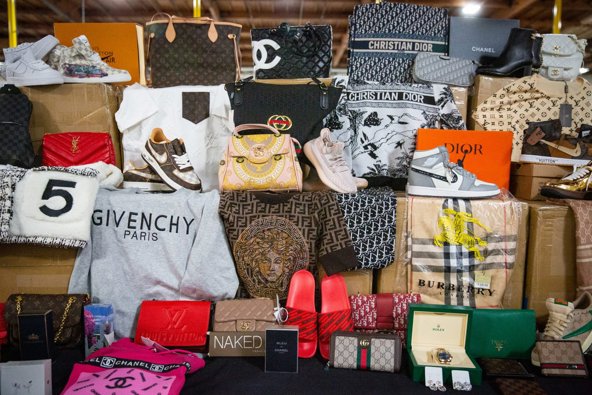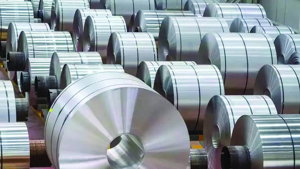
Germany Becomes EU’s Main Target for Counterfeit Goods
Germany’s status as Europe’s largest counterfeit goods target has sparked demands for tougher online marketplace regulation and border enforcement.
Germany has emerged as the leading destination for counterfeit products within the European Union, according to new data from the EU Intellectual Property Office (EUIPO). From fake designer clothing and cosmetics to pirated software and children’s toys, counterfeit goods continue to flood the European market — with Germany at the epicenter of the problem.
A Growing Threat to German Industry
The German Brand Association (Markenverband) estimates that counterfeit goods cause annual economic losses exceeding €8 billion, far higher than official statistics suggest due to a substantial number of unreported cases. Authorities estimate that roughly 144,000 packages containing counterfeit goods enter the country each week, much of it through online marketplaces.
“We can no longer tolerate markets flooded with dangerous, counterfeit products manufactured under deplorable environmental and labor conditions,“ said Franz-Olaf Kallerhoff, president of Markenverband, which represents companies such as Hugo Boss, Haribo, Henkel, Miele, and Vileda.
The association hosted the Day of Brand Economy conference in Berlin this week, where Chancellor Friedrich Merz was expected to address the growing counterfeit crisis.
Record-High Value of Seized Counterfeits
EUIPO data show that in 2024, authorities seized 112 million counterfeit items across EU borders and domestic markets — slightly fewer in number than the previous year but with a record €3.8 billion in estimated retail value. The increase stems largely from higher unit prices, particularly for electronics and branded fashion goods.
Germany accounted for about one-quarter of the total value of all counterfeit goods seized at the EU’s external borders — more than any other member state.
| Category | Share of Total Seizures |
|---|---|
| CDs, DVDs, Video Games, Software | 33% |
| Toys | 18% |
| Clothing | 7.5% |
| Fashion Accessories | 6% |
| Cigarettes & E-Cigarettes | 4.5% |
| Perfumes & Cosmetics | 3% |
Why Germany?
Experts attribute Germany’s vulnerability to its economic size and strong brand reputation. “As Europe’s largest economy, Germany is particularly affected. Its brands are internationally recognized for quality, which makes them prime targets for counterfeiters,” Kallerhoff explained.
The EUIPO refrained from speculating on the causes, but analysts note that Germany’s central role in European e-commerce logistics and its high consumer purchasing power make it a lucrative hub for counterfeit distribution.
Origins and Distribution
The majority of counterfeit goods entering the EU originate from China and Turkey, arriving mainly via large online platforms. Despite numerous seizures, only 0.7% of detected cases have led to court proceedings, leaving most perpetrators unpunished.
“This shows that counterfeiters are operating in a low-risk, high-profit environment,“ noted one EU customs official. “As long as penalties remain rare, counterfeit networks will keep exploiting online retail channels.”
Economic and Employment Impact
Both Markenverband and the German Retail Federation (HDE) warn that unchecked counterfeit trade threatens legitimate businesses and jobs. HDE president Alexander von Preen emphasized the urgency of tighter enforcement:
“Those who sell in our country must follow our rules. Otherwise, domestic retailers will bleed dry in this unfair competition.“
According to HDE, around 64,000 jobs are at risk as counterfeit imports undermine local industries and legitimate online sellers.
The organizations are calling for:
- Abolishing the €150 customs exemption threshold for small parcels.
- Mandatory declaration for every imported package.
- Greater liability for online platforms hosting third-party sellers.
- Increased funding and personnel for customs and market surveillance agencies.
They also propose banning the relisting of counterfeit items once they have been removed from online marketplaces.
Consumer Risks: Beyond Economic Losses
Counterfeit products are not just a problem for companies — they can pose serious health and safety risks to consumers. Fake cosmetics may contain toxic chemicals, counterfeit toys often lack safety testing, and imitation electronics can be fire hazards.
Unlike legitimate manufacturers, counterfeiters are not bound by product liability laws, leaving consumers without recourse in the event of injury or damage.
“Consumers should be extremely cautious, especially when prices seem too good to be true,“ said a spokesperson for the Federal Office for Consumer Protection.
How Can Consumers Respond?
Authorities emphasize that consumers play a crucial role in combating counterfeit goods.
What should I do if I receive a counterfeit product?
Report it to the platform where you purchased it and file a complaint with the police.
Is buying counterfeit goods illegal?
In most EU countries, purchasing counterfeit items is not a criminal offense, but reselling them is illegal and punishable.
Can brand owners take legal action?
Yes. Trademark holders can sue manufacturers and distributors of counterfeit goods for damages and demand the removal of listings or confiscation of stock.
A Broader EU Challenge
The counterfeiting problem extends beyond Germany. EUIPO estimates that intellectual property violations cost the EU economy tens of billions of euros annually, reducing tax revenues and threatening innovation.
The agency has been working with customs authorities to improve data-sharing and traceability systems to detect counterfeit shipments earlier. It is also urging online marketplaces to deploy AI-based screening tools that can identify fake listings automatically.
Still, enforcement remains uneven among EU member states, and budget constraints limit the capacity of border and market regulators.
Outlook
As counterfeit trade evolves with digital commerce, experts warn that the EU’s current framework may be insufficient. The exponential rise of small parcels from e-commerce platforms — often shipped directly from Asia to consumers — poses a significant enforcement challenge.
The German government has signaled plans to push for tougher EU-wide penalties, stronger cooperation with Chinese and Turkish authorities, and greater accountability for e-commerce platforms like Amazon, eBay, and AliExpress.
“Counterfeiting is no longer a niche problem — it’s a structural threat to fair trade and consumer safety,“ Kallerhoff concluded. “If Europe wants to protect its innovation and jobs, we must make it riskier and less profitable to sell fakes.”
Key Takeaways
- Germany is the top target for counterfeit goods in the EU.
- Estimated losses to German companies exceed €8 billion annually.
- Over 112 million fake items were seized EU-wide in 2024, worth €3.8 billion.
- Main sources: China and Turkey; main distribution channel: online platforms.
- Only 0.7% of cases result in prosecution.
- Consumer vigilance and stronger digital enforcement are crucial to reversing the trend.
Source: EUIPO MarketScreener ECTA






